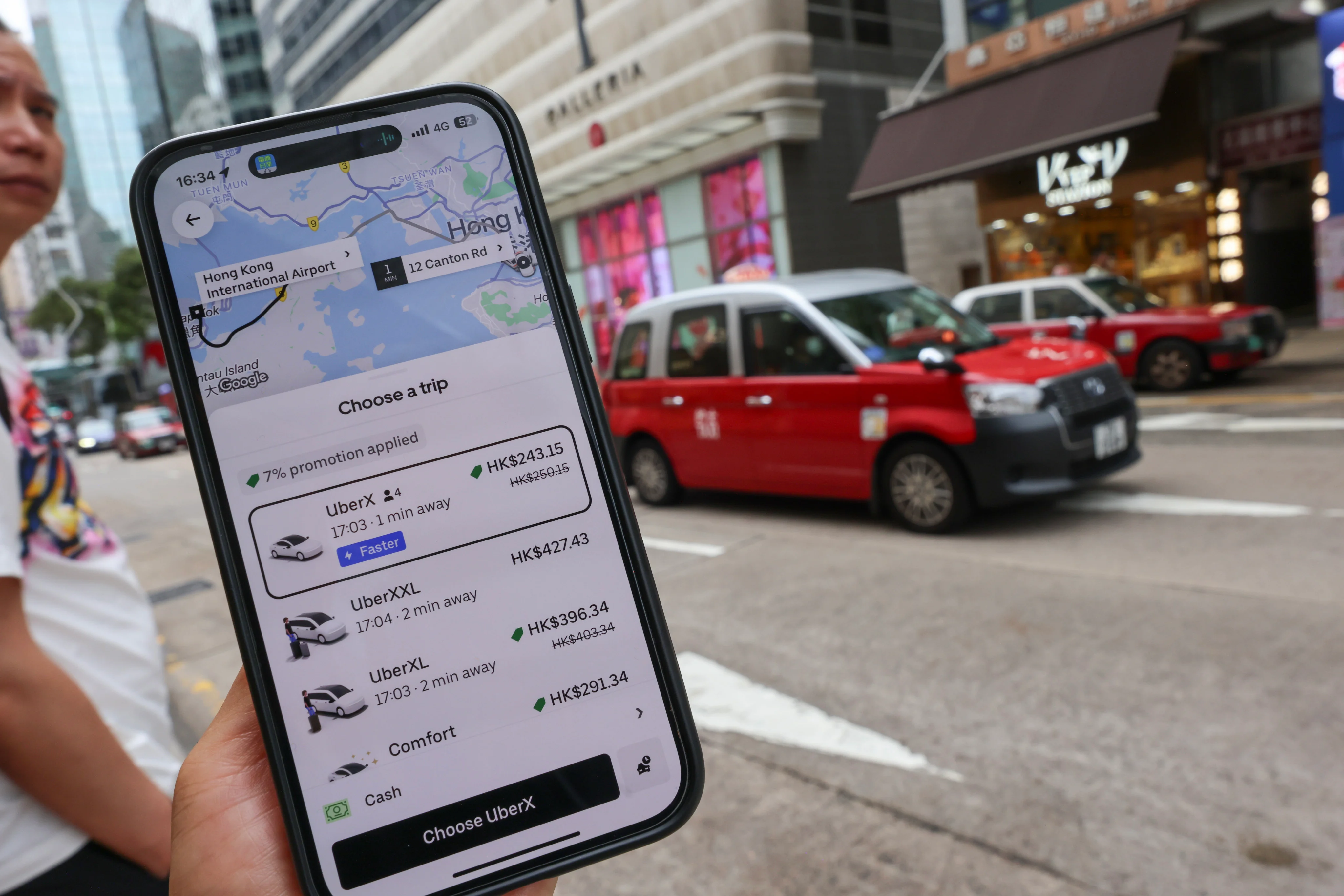By Edith Lin
A regulatory proposal on ride-hailing services in Hong Kong will be submitted to the legislature before the end of the month, the transport minister has said, months earlier than the original plan amid calls to accelerate the process.
Secretary for Transport and Logistics Mable Chan said on Sunday that the authorities would provide more comprehensive and concrete details on regulating ride-hailing platforms, drivers and vehicles as they strived to roll out the proposal within this month. The government’s initial deadline for introducing the proposal was the end of this year.
“The primary goal is to safeguard the safety of residents’ travel. Additionally, we hope to create a healthy and positive competitive environment to allow both taxi and ride-hailing services to coexist, complement each other, and develop orderly,” she said on a radio show.
Currently, it is illegal in Hong Kong for private vehicle drivers to accept paid customers without a hire-car permit. Despite this, ride-hailing platforms such as Uber, Tada, Amap, and Didi Chuxing operate unregulated. Amap is operated by Alibaba Group Holding, which also owns the South China Morning Post.
Chan said that the government had drawn inspiration from ride-hailing regulations in mainland China and overseas, as well as the city’s existing regulatory regime for public transport operators.
She added that the ride-hailing platforms would need to bear significant responsibility and undergo assessment. Similarly, vehicles and drivers involved would be required to meet certain conditions and pass assessments to ensure passenger safety.
Asked if the government would impose a quota on drivers working for ride-hailing operators, Chan said the authorities would listen to opinions and hoped to establish a regulatory framework to discuss how to set the quota.
Chan pointed out that the quota should provide convenience to residents, ensure orderly market development and consider the city’s public transport ecosystem and traffic capacity.
She added that drivers currently working for ride-hailing platforms were part-time and that taxis in the city remained an important service provider in the transport sector.
While acknowledging variable quality in the city’s taxi services, Chan highlighted government efforts to improve them, including the launch of five premium taxi fleets by the end of July.
She added that the government would also table a bill in the legislature later this month to require taxis to install surveillance cameras, navigation and electronic payment systems.
Chan said the authorities hoped that all taxis could have e-payment systems installed by early next year.
Separately, Chan also responded to former Chief Executive Leung Chun-ying’s suggestion for the government to consider relaxing the proposed 100-vehicle quota for the Southbound Travel for Guangdong Vehicles scheme.
Leung, a vice-chairman of the nation’s top political advisory body, the Chinese People’s Political Consultative Conference, suggested an adjustable limit for weekdays and holidays.
The scheme is set to allow 100 motorists from the mainland’s Guangdong province to cross into Hong Kong daily via the Hong Kong-Zhuhai-Macau Bridge.
While Chan did not provide a specific time frame for increasing the quota, she expressed hope that society would be prepared.
“What is crucial is that the government implements an internal system and provides supporting facilities. I also hope society can plan ahead so that we will be well-equipped to ensure a smooth roll-out when the conditions are ripe,” she said.
Speaking on a separate TV news programme on Sunday, Leung said the government could consider setting aside an extra quota for mainland drivers to travel around Lantau Island.
“Apart from allowing 100 vehicles into urban areas in Hong Kong, is it possible that we can allow a certain number of vehicles to drive around Lantau Island without crossing the Tsing Ma Bridge? Lantau Island is comparatively more spacious,” he said.
He added that the authorities should consider expanding the scheme to other land checkpoints and implement a co-location arrangement, which allows travellers to clear immigration channels in both jurisdictions at a single site.
The arrangement has been implemented at the high-speed railway station in West Kowloon and at the Shenzhen Bay control point.
Leung noted that the government was exploring introducing a boundary facilities fee on private cars departing via land boundary control points to boost income, but he said the charges should be as low as possible, or they would restrict the city’s development.
